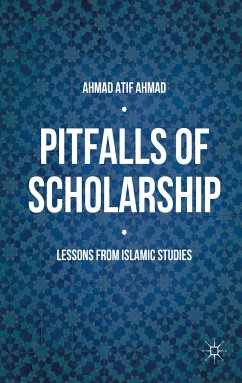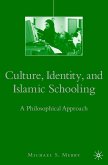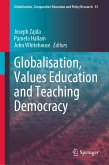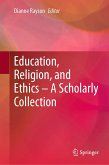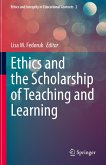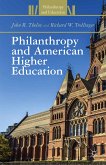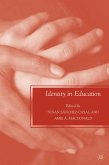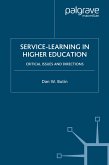Pitfalls of Scholarship offers an array of reflections on higher education, its entanglements with humanity's pursuit of natural and social knowledge, and the impact national environments have upon it. This book considers the humanities, vocational, and scientific/technological sides of the university from the vantage-point of an Islamic studies scholar in twenty-first century American academia. Four discussions and a personal note make up the parts of these pages. The first discussion sets the stage with a description of the irregularities of our age of late modernity and the limits of scholarship in it. The second focuses on clashes of personal and academic knowledge with social assumptions and convictions. Guiding the discussion is an unlikely narrative from an old era where academic freedom did not exist. The third discussion points to the surprisingly negative impacts of obsession with research methods in the modern academy. "Scholarships of negation" are identified as the main illness of the age, next to popular exaggerations of the value of standard assumptions and excellent academic institutions. The fourth and final section deals with modern education's aspiration toward acquiring democratic quality, and the implications of further democratization of education.
Dieser Download kann aus rechtlichen Gründen nur mit Rechnungsadresse in A, B, BG, CY, CZ, D, DK, EW, E, FIN, F, GR, HR, H, IRL, I, LT, L, LR, M, NL, PL, P, R, S, SLO, SK ausgeliefert werden.
Reader Response to LIMITS: Scholarship in an Age of Ends
This manuscript is replete with brilliant insights, unconventional analysis and great overall promise. Yet, I find myself unable to endorse its publication as is. To begin with, the manuscript simply did not read very well. It lacked flow, often seemed to fizzle out on the brink of making its actual point (or at least making it fully), and routinely seemed to dart in and out of topics, eras and ideational universes without sufficient warning, transition or glue to hold its disparate strands together. I guess the overall problem here might be described as one of genre: it is simply not clear what kind of text the author is attempting to produce. At times, one gets the impression that the text is headed in the direction of a series of long, sophisticated aphorisms; at other times, one senses a clear autobiographical commitment; still at other times, one finds oneself get stuck in the interstices of the writer's indecision as to whether he is writing intellectual history, continuing in the tradition of Islamic studies or doing modern philosophy (among other things). There was also a tendency to use humor or sarcasm as a rhetorical device; but as often as not, this came off as more sophomoric, flippant or even unduly dismissive; it did little to advance the clarity or communicative effectiveness of the text. This is unfortunate, because much of the material adduced and the insights offered are rich, sophisticated and thought-provoking. I think the author needs to re-think his overall strategy and framework and decide in explicit terms what kind of text he wants to write. This is clearly not a research project; so the author need not necessarily go back to the library. Indeed, I suspect that there is enough substantive material here for him to make his case. I just think he has to be a bit more explicit and forthcoming about what this case is and how his materials can be marshaled to drive it home.
This takes us, of course, to the matter of organization. I suppose the inclusion of the topics the author includes could be successfully brought together in a single volume. But his sort of stream-of-consciousness style leaves one with no real sense of direction. Often, upon completing a chapter, one is gratified by the many individual (and often isolate insights) one has picked up along the way; but one is left with no real sense of the overall point or of how these disparate insights necessarily relate to it. This is further compounded by the question of whom the intended audience for this text might be. Robert J. Richards, Eric Davis and Carl Linnaeus are not names with which those trained or interested in Islam or Islamic studies are likely to be readily familiar. And Ghazali, Ibn Rushd and Taha Husayn are not likely to be known among scholars and students outside the field of Islamic studies. Of course, my point is not to suggest that these disparate universes cannot or should not be brought together or into conversation with each other, especially in the post-9/11 moment in which we live (where the distance between East and West is shrinking as we speak). But I think the author may be simply assuming too much in trusting the reader to make the kinds of connections he leaves him or her to make. I am not sure what I would suggest here, other than perhaps 'slowing down' a bit and providing more grounding (and perhaps less substantive material) to the end of leaving the reader a bit more empowered and with a sense of discovery and intellectual victory. Or perhaps the author might consider arranging his materials more chronologically, where he works from the Islamic past into the Islamic and Western present in a manner that allows for the tracing and assessment of continuities and discontinuities that provides the reader the benefit of a thicker context. Again, I am not sure that any of this would amount to a successful strategy. But it seems to me that the one the author
This manuscript is replete with brilliant insights, unconventional analysis and great overall promise. Yet, I find myself unable to endorse its publication as is. To begin with, the manuscript simply did not read very well. It lacked flow, often seemed to fizzle out on the brink of making its actual point (or at least making it fully), and routinely seemed to dart in and out of topics, eras and ideational universes without sufficient warning, transition or glue to hold its disparate strands together. I guess the overall problem here might be described as one of genre: it is simply not clear what kind of text the author is attempting to produce. At times, one gets the impression that the text is headed in the direction of a series of long, sophisticated aphorisms; at other times, one senses a clear autobiographical commitment; still at other times, one finds oneself get stuck in the interstices of the writer's indecision as to whether he is writing intellectual history, continuing in the tradition of Islamic studies or doing modern philosophy (among other things). There was also a tendency to use humor or sarcasm as a rhetorical device; but as often as not, this came off as more sophomoric, flippant or even unduly dismissive; it did little to advance the clarity or communicative effectiveness of the text. This is unfortunate, because much of the material adduced and the insights offered are rich, sophisticated and thought-provoking. I think the author needs to re-think his overall strategy and framework and decide in explicit terms what kind of text he wants to write. This is clearly not a research project; so the author need not necessarily go back to the library. Indeed, I suspect that there is enough substantive material here for him to make his case. I just think he has to be a bit more explicit and forthcoming about what this case is and how his materials can be marshaled to drive it home.
This takes us, of course, to the matter of organization. I suppose the inclusion of the topics the author includes could be successfully brought together in a single volume. But his sort of stream-of-consciousness style leaves one with no real sense of direction. Often, upon completing a chapter, one is gratified by the many individual (and often isolate insights) one has picked up along the way; but one is left with no real sense of the overall point or of how these disparate insights necessarily relate to it. This is further compounded by the question of whom the intended audience for this text might be. Robert J. Richards, Eric Davis and Carl Linnaeus are not names with which those trained or interested in Islam or Islamic studies are likely to be readily familiar. And Ghazali, Ibn Rushd and Taha Husayn are not likely to be known among scholars and students outside the field of Islamic studies. Of course, my point is not to suggest that these disparate universes cannot or should not be brought together or into conversation with each other, especially in the post-9/11 moment in which we live (where the distance between East and West is shrinking as we speak). But I think the author may be simply assuming too much in trusting the reader to make the kinds of connections he leaves him or her to make. I am not sure what I would suggest here, other than perhaps 'slowing down' a bit and providing more grounding (and perhaps less substantive material) to the end of leaving the reader a bit more empowered and with a sense of discovery and intellectual victory. Or perhaps the author might consider arranging his materials more chronologically, where he works from the Islamic past into the Islamic and Western present in a manner that allows for the tracing and assessment of continuities and discontinuities that provides the reader the benefit of a thicker context. Again, I am not sure that any of this would amount to a successful strategy. But it seems to me that the one the author

